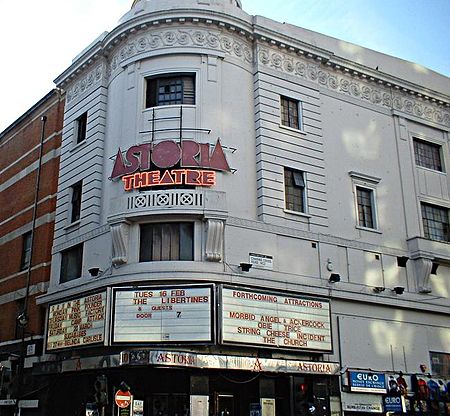London Astoria

The London Astoria was a music venue at 157 Charing Cross Road, in London, England. Originally a warehouse during the 1920s, the building became a cinema and ballroom. It was converted for use as a theatre in the 1970s. After further development, the building re-opened in the mid-1980s, as a night club and live music venue for well-known musical acts. There are half a dozen clubs and smaller music venues in the adjacent buildings. In 2009 the venue closed, and was demolished as part of the development plans of the Crossrail project. The venue is still seen today as having been an iconic music establishment, as it helped to launch the careers of many British rock bands and also played a part in the UK success of many international acts.
Excerpt from the Wikipedia article London Astoria (License: CC BY-SA 3.0, Authors, Images).London Astoria
Sutton Row, London Bloomsbury
Geographical coordinates (GPS) Address Nearby Places Show on map
Geographical coordinates (GPS)
| Latitude | Longitude |
|---|---|
| N 51.515833333333 ° | E -0.13055555555556 ° |
Address
Sutton Row
W1D 4NR London, Bloomsbury
England, United Kingdom
Open on Google Maps







